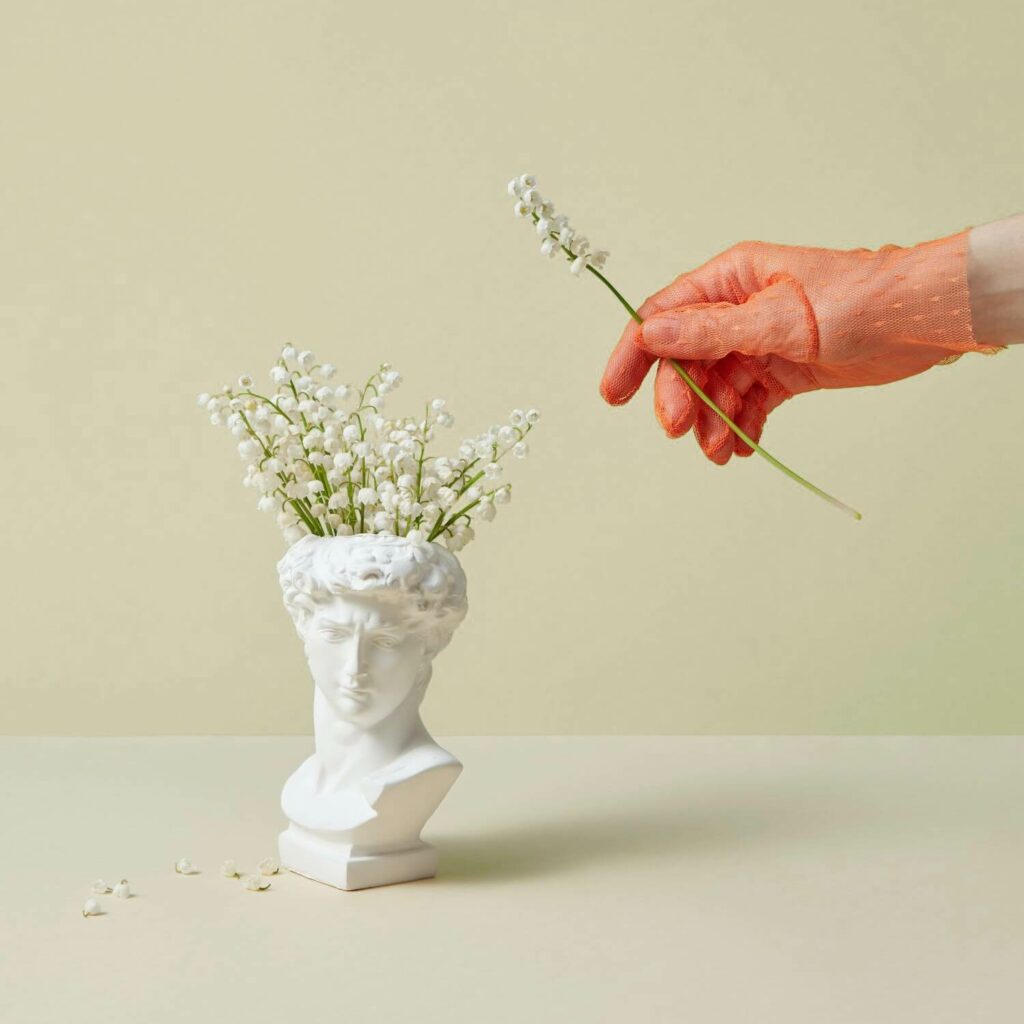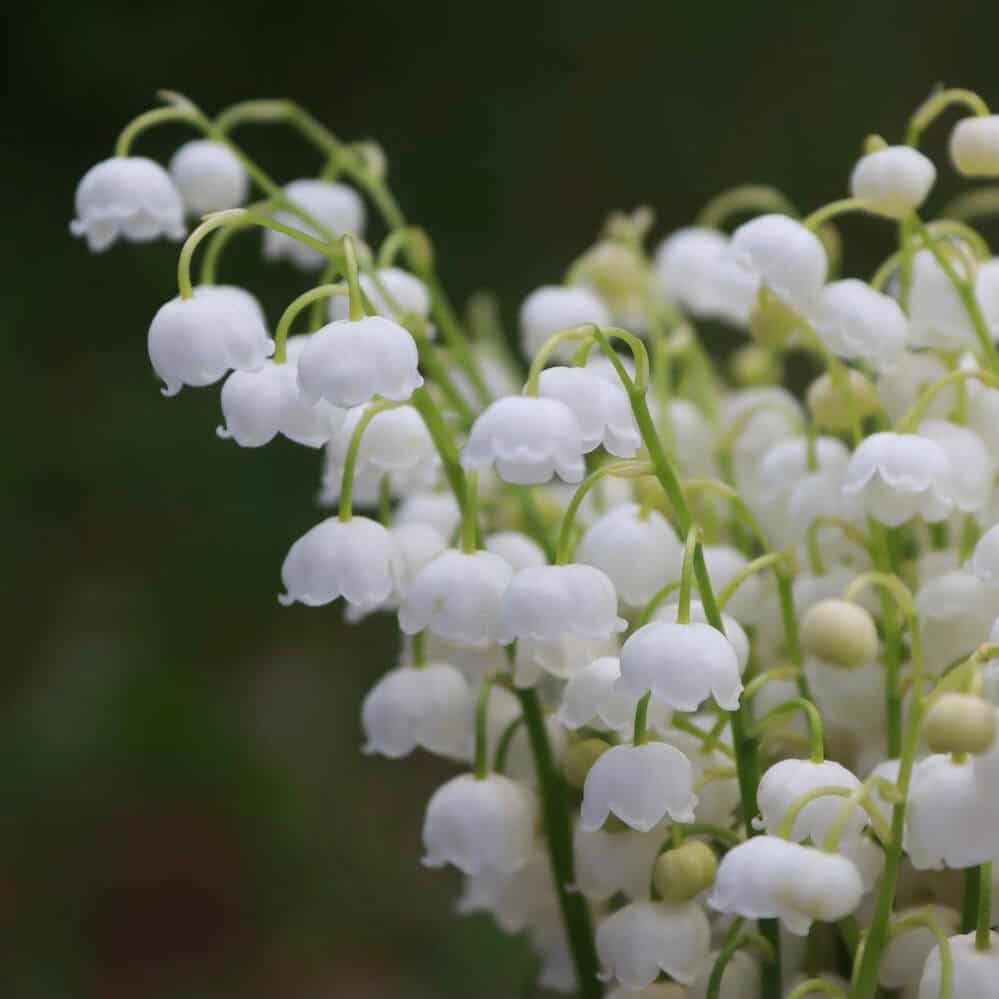Originating from China, Lily of the Valley in May symbolizes the return of beautiful days, as well as the return of happiness in the language of flowers. Given on May 1st for Labor Day celebrations, it serves to celebrate the new season.
Loaded with myths and symbols, it's the one that is offered, announcing both good harvests and good graces.

Since the Belle Époque, Christian Dior has indeed made it the emblem of his prestigious fashion house.
Also known as "lily of the valley," the muguet is a white flower resembling small, highly fragrant bell-shaped blossoms.
Floral note Lily of the valley is used mainly in perfumery, particularly as a heart note, but rarely in its natural form, as it is impossible to produce an essential oil from this extremely delicate flower. It is therefore known as a "mute flower".
According to Greek mythology, Apollo is said to have covered the ground of Mount Parnassus with these delicate flowers so that the muses wouldn't hurt their feet. This also gives it the name "Grass of Parnassus."
The first perfumes based on Lily of the Valley are : Lily of the Valley by François Coty, directed by Nez Henri Robert, followed by the Lily of Happiness by Caron. Diorissimo, a soliflore perfume, was also a real success.
Lily of the valley is also found in the following perfumes: Anaïs by Cacharel, Givenchy III, Country Water by Sisley or the well-known Beige by Chanel.


The expert's opinion
Lily of the valley is used with delicacy in perfumery.
Its green, fresh, clean, floral, almost sunny and serene scent enables the creation of fragrances with floral and feminine trails of remarkable gentleness.
Despite its innocent appearance, lily of the valley is not edible.
You can find this note in our perfume organ, allowing you to create your own personal fragrance.